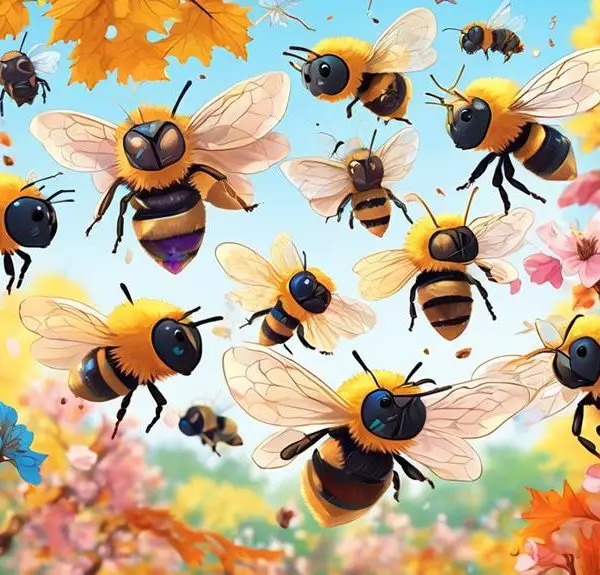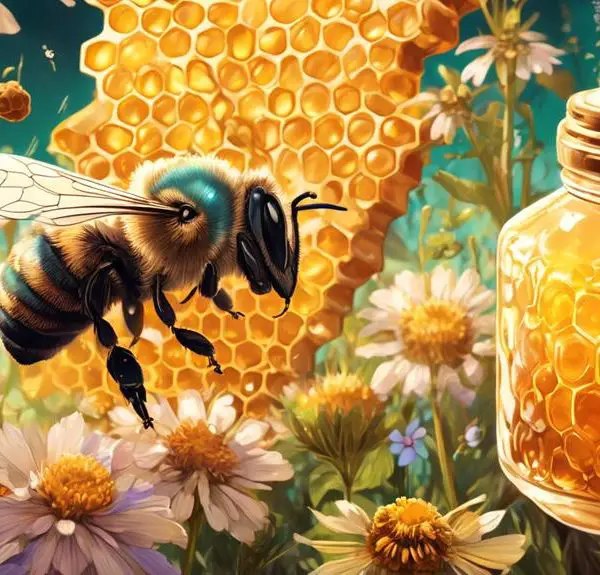Find out if the industrious mason bee can actually grow over an inch long, challenging what you thought you knew about these vital pollinators.
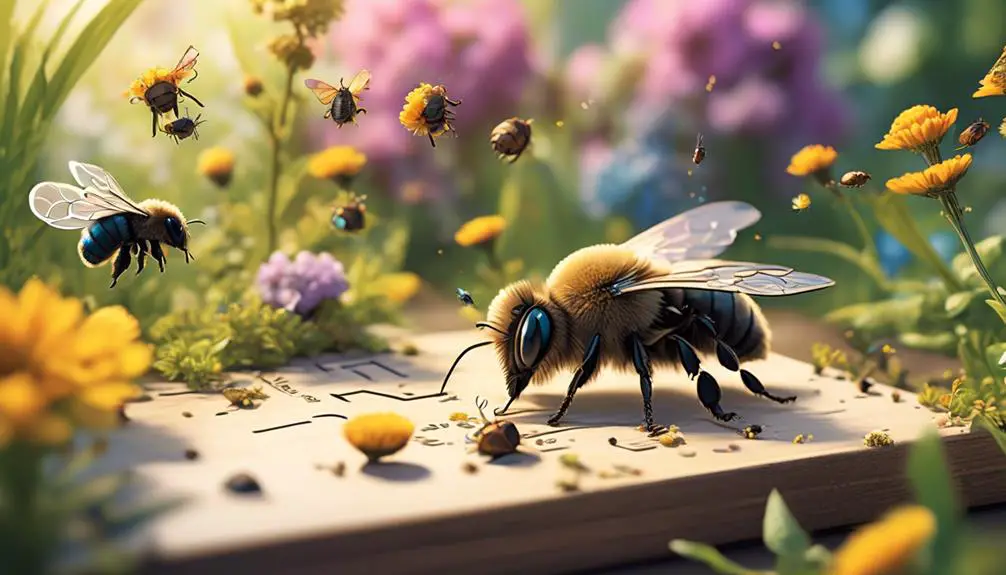
Can Mason Bees Get Over an Inch Long?
Just as Gulliver found himself in a land of giants, you may find yourself pondering the size of creatures in your own garden, specifically the mason bee. You might be wondering, can these industrious pollinators possibly grow to over an inch long?
While it's common knowledge that mason bees are a key player in our ecosystems, their size is a topic that's not as often discussed, and it's likely to surprise you.
As we delve into this intriguing subject, you'll find yourself questioning what you thought you knew about these fascinating insects.
Key Takeaways
- Mason bees are generally smaller in size compared to other bee species, measuring between 0.2 to 0.4 inches in length.
- Despite their smaller size, mason bees are efficient and effective pollinators, carrying pollen on their abdomen and having a unique 'scopa' for efficient pollen gathering.
- The size of mason bees is primarily determined by their genetics, but nutrition, temperature, parasites, and disease can also influence their size.
- Mason bees' solitary nature and focused work ethic make them vital for early spring pollination and they can pollinate as effectively as larger bee species.
Understanding Mason Bees
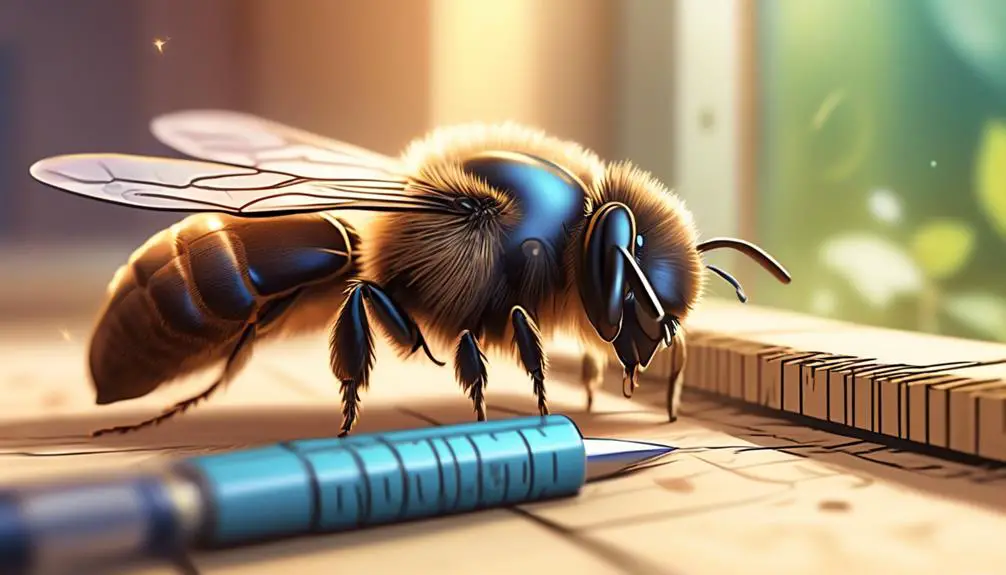
Did you know that Mason Bees, scientifically known as Osmia, are a group of native bees that are incredibly efficient pollinators? You've likely seen them buzzing around your garden, yet their small size and nondescript coloring might've caused you to overlook them.
Unlike honey bees, which live in large colonies, mason bees are solitary creatures. Each female bee mates, then searches for a suitable location to lay her eggs. You'll often find their nests in hollow reeds or holes in wood, where they'll seal each egg within its own cell using mud—hence the name 'mason'.
Size-wise, they're typically less than an inch long, but they can sometimes grow slightly larger. They're usually metallic blue or green, making them easy to spot if you're looking out for them.
But their true claim to fame? Their pollinating prowess. It's said that a single mason bee can do the pollinating work of 100 honey bees. They're not as well-known as their honey-producing counterparts, but in terms of helping our ecosystems thrive, mason bees are true unsung heroes.
Physical Characteristics of Mason Bees
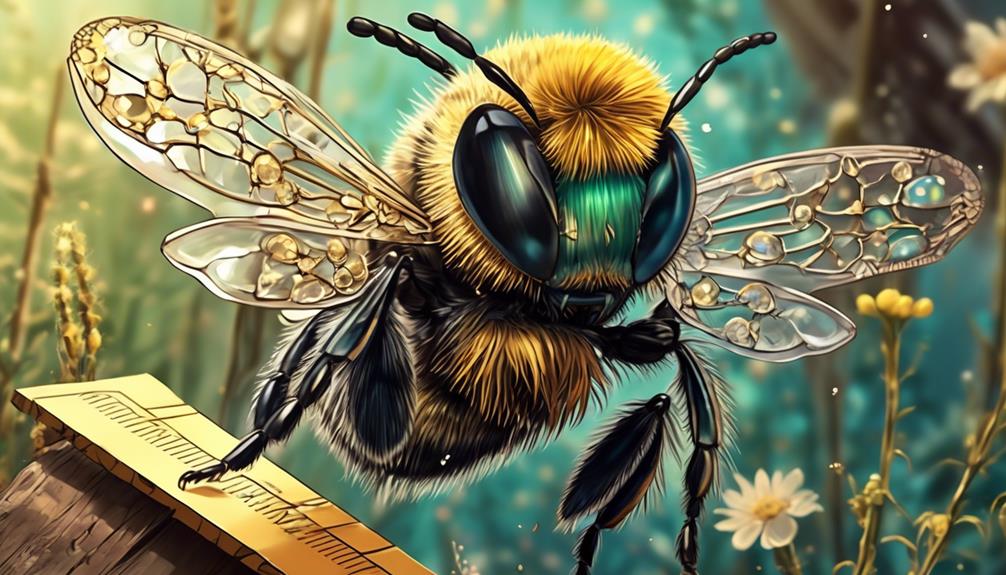
When observing mason bees up close, you'll notice several distinct physical characteristics that set them apart from other bee species. Unlike their more well-known honeybee cousins, mason bees are solitary creatures, with metallic hues ranging from blue to green. They're smaller, typically measuring between 0.2 to 0.4 inches in length.
These bees have a robust, stocky body, and their abdomen is rounder and less segmented compared to other bees. Their wings are transparent with a slight iridescent sheen, and their antennae are short and bent. Their jaws are unusually large, a feature that plays a significant role in their nesting behavior.
Mason bees' most notable characteristic is perhaps their ability to carry pollen on their abdomen, unlike most bee species that carry it on their hind legs. This is a result of their unique 'scopa', a dense brush of hairs under their abdomen, which is highly efficient in gathering pollen.
Contrary to the common belief, mason bees rarely exceed an inch in size. They're a vital part of our ecosystem, serving as excellent pollinators due to these unique physical traits. So, next time you spot a small metallic bee buzzing around, you'll know it's a mason bee.
Debunking Mason Bees Size Misconceptions
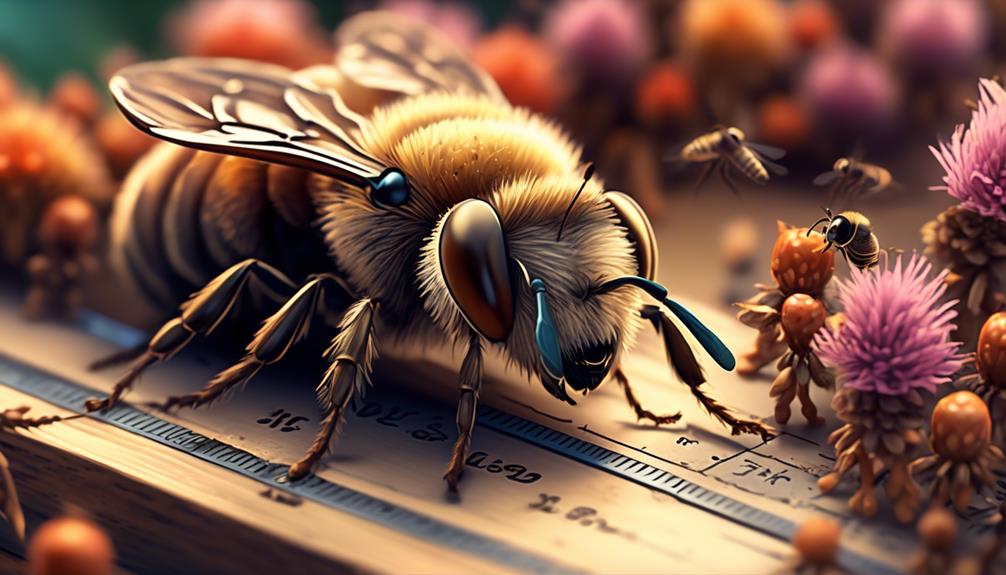
So, you've heard that mason bees can grow over an inch long? Let's debunk this size misconception. In reality, the average size of a mason bee ranges from a quarter to half an inch long, significantly less than the 'inch-long' myth you may have heard.
The confusion often arises due to the sizeable variation in bee species. The world's smallest bee, the Perdita minima, measures just 0.07 inches, while the largest, the Megachile pluto, can reach up to 1.5 inches. However, mason bees, or Osmia, fall in the more modest size category.
Their name, 'mason bee,' comes from their nesting behavior, which involves using mud or other 'masonry' like materials. They're critical for early spring pollination, so their size doesn't diminish their importance.
Factors Influencing Mason Bees Size
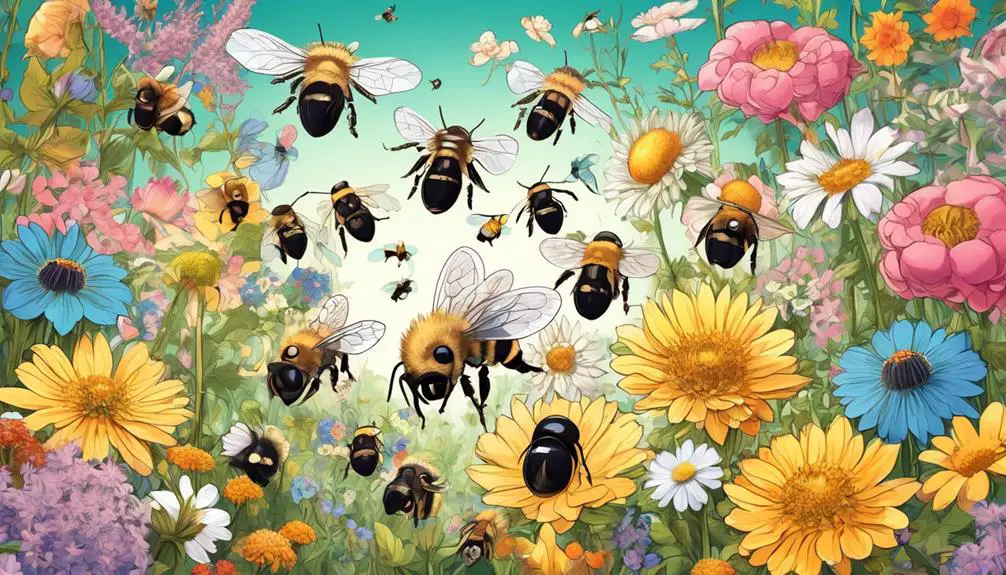
Understanding the factors that influence the size of mason bees requires a deeper dive into their biology and environmental conditions. Let's start with their biology. You see, the size of mason bees, like most insects, is determined primarily by their genetics. However, this alone doesn't explain the variation in size you might observe.
Environmental conditions play a significant role too. One key factor is nutrition. The quality and quantity of food a larva receives directly affects its growth. Specifically, larvae that have ample pollen and nectar, the primary food sources for mason bees, tend to develop into larger adults.
Temperature is another crucial factor. Their growth rate and ultimate size can be influenced by the temperature of their environment during the larval stage. Cooler temperatures can slow growth, potentially leading to smaller bees.
Lastly, the presence of parasites or disease can also impact size. Infected bees tend to be smaller due to the energy and resources diverted towards fighting off the infection.
Comparing Mason Bees to Other Species
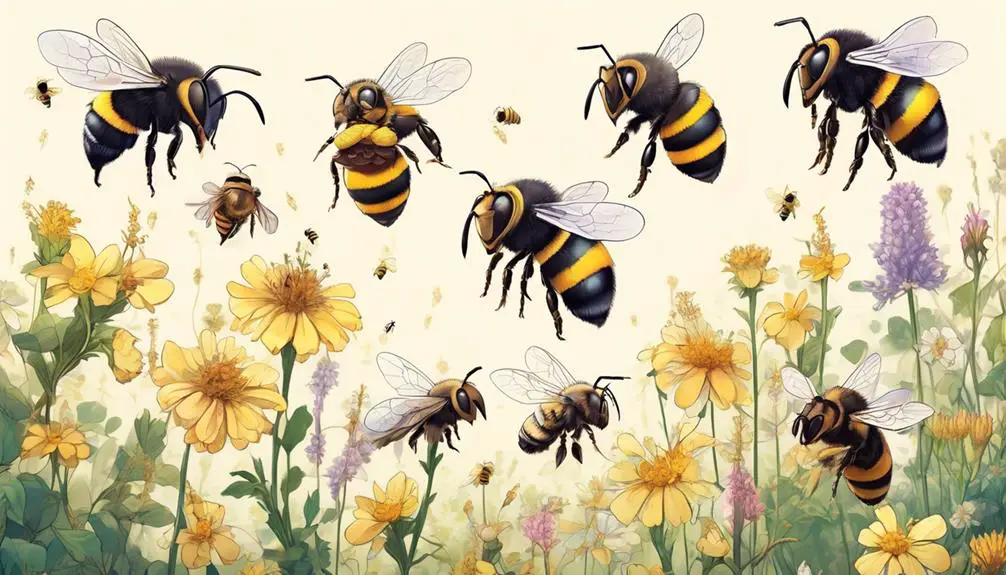
Compared to other bee species, you'll find that mason bees are generally smaller, yet their size doesn't hinder their exceptional pollination abilities. Despite only reaching a length of about 1/2 inch, mason bees can pollinate as effectively as their larger counterparts.
For a sense of scale, consider the European honeybee, which typically measures around 3/4 inch. Carpenter bees, a larger species, can stretch up to 1 inch or more. But remember, size isn't everything in the bee world. It's the mason bee's solitary nature and focused work ethic that make it a champion pollinator.
Unlike social bees, which live in colonies and share work, mason bees operate alone. Each female is a queen and a worker, busily foraging for pollen and nectar to create food stores for her offspring. This solitary behavior drives a high rate of flower visitation, leading to efficient, effective pollination.
Conclusion
In conclusion, you've seen that mason bees, while smaller than many other bee species, rarely exceed an inch in length. Factors like diet and environment influence their size, but misconceptions often exaggerate their true dimensions.
So, next time you spot a bee around, remember: it's unlikely to be a giant mason bee! Understanding their accurate size helps us appreciate their role in nature more and dispel undue fear about these essential pollinators.

